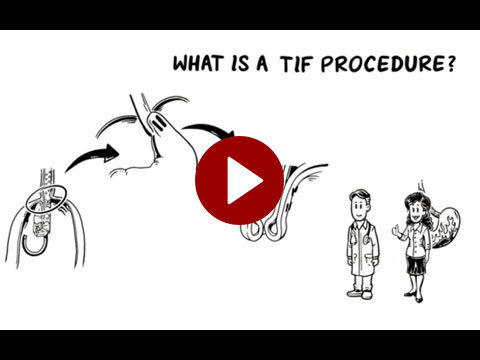
How Transoral Incisionless Fundoplication (TIF) Can Treat GERD
Transoral Incisionless Fundoplication (TIF) is an efficient procedure which is performed to resolve gastroesophageal reflux disease (GERD). This procedure is best for those patients who were initially unable to find relief through lifestyle changes and medication, and for those who want to cure their GERD but do not want to undergo a surgically invasive procedure.
TIF is an efficient procedure because of its simplicity. Instead of making incisions to access a patient’s gastroesophageal region, doctors simply reach the area by inserting a device called an esophyX through the mouth.
How Does TIF Work?
In order to understand how the TIF procedure works it is important to understand how GERD develops in the first place. GERD symptoms usually begin to occur when there is a problem with one’s gastroesophageal valve (GEV).
This valve is located in the Z area (between the esophageal tissue and stomach tissue) and it plays a large role in preventing one’s stomach acid from climbing up into the esophagus.
When the valve is damaged, stomach acid can easily get into one’s esophagus and this leads to GERD. A persons GEV can stop working properly when one has a hiatal hernia or when one’s lower esophageal sphincter gets damaged.
During a TIF, the esophyX device is used with an endoscope and inserted into one’s mouth. When it reaches the desired location, the device is maneuvered to pull down on the Z area and create folds. The folds are then held together by serosal fused plastic fasteners. These fasteners hold on to the new valve allowing serosal fusion to occur. After serosal fusion, the valve is strong enough to function without support.
This new valve works exactly like the previous one and creates a barrier between the stomach and the esophagus, ultimately curing the symptoms of GERD.
Is TIF the Best Option Available?
TIF is the ideal solution because it is a minimally invasive procedure and absolutely no incisions have to be made during the process.
Lifestyle changes and medication are usually the first resort when a patient complains about having GERD symptoms; however, these methods can only do so much. When one’s GEV is damaged, altering the stomach’s chemistry through medication isn’t going to fix the main problem; it will simply reduce the negative symptoms through an alternative method.
The only way to fix a damaged GEV is through surgical procedures. Traditionally, doctors resort to fundoplication to fix the GEV when medications fail. Fundoplication can be an open surgery or can be conducted laparoscopically as well. In both cases, surgeons have to make incisions in the body, whether large or small, to get access to the GEV.
The fundoplication procedure often results in more pain afterward, and also leads to longer recovery time periods. On the other hand, individuals who undergo TIF instead of fundoplication can return back to daily activities in just a few days after their procedure and usually do not have to feel as much pain because there are no incisions that need to heal.
Schedule a consultation
Contact us today and we’ll be happy to answer any questions you may have.




